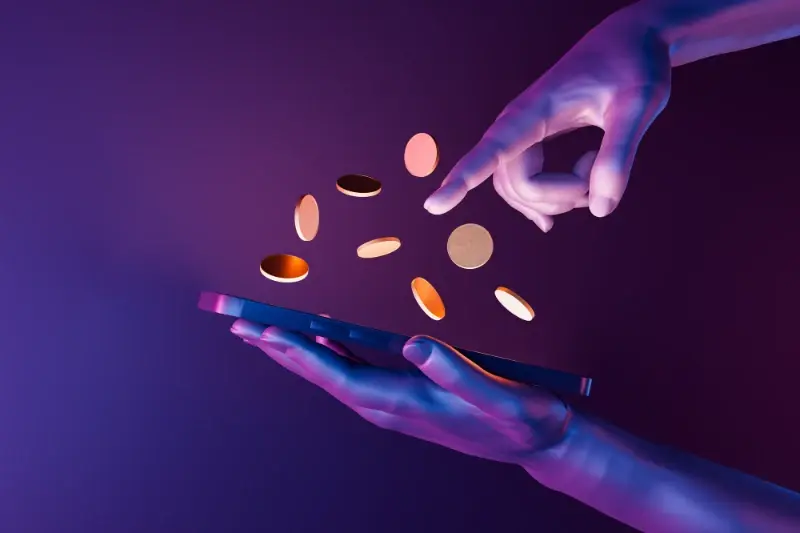8 Mobile Game Monetisation Strategies That Actually Work
Did you know that the mobile gaming industry generates more revenue than movies and music combined? That's right—those little games on our phones are making serious money. But here's the thing that might surprise you: most successful mobile games are free to download. So how exactly do developers turn free games into profitable businesses?
After working with countless gaming startups and established studios, I've seen firsthand which monetisation approaches actually work and which ones send players running for the hills. The truth is, making money from mobile games isn't about tricking players or being greedy—it's about creating genuine value that people are happy to pay for.
The best mobile game monetisation feels invisible to players; they're paying because they want to, not because they have to
In this guide, we'll explore eight proven revenue strategies that top mobile games use to generate consistent income whilst keeping players engaged and satisfied. From freemium models that welcome everyone to subscription services that create steady income streams, these approaches have been tested by millions of players worldwide. Whether you're developing your first mobile game or looking to improve your existing monetisation, these strategies will help you build a sustainable business that benefits both you and your players.
Freemium Models: The Gateway to Gaming Success
The freemium model has become the backbone of mobile gaming monetisation—and for good reason. It's simple: players download your game for free, get hooked on the core experience, then spend money on premium features or content. This approach removes the biggest barrier to entry (the upfront cost) whilst still creating opportunities for revenue generation.
What makes freemium particularly effective is how it lets players taste your game before committing financially. They can explore the mechanics, understand the value proposition, and develop an emotional connection with your content. Once they're invested, they're far more likely to spend money on upgrades, cosmetics, or convenience features.
Common Freemium Revenue Streams
- Premium currency that speeds up progression
- Cosmetic items like character skins or themes
- Extra lives or energy refills
- Bonus levels or exclusive content
- Ad removal options
- Storage expansion or inventory upgrades
The key to freemium success lies in balance. Your free experience needs to be genuinely enjoyable—not just a glorified demo. Players should feel they're getting value without spending, but premium options should offer meaningful benefits. Push too hard and you'll drive players away; too soft and you won't generate enough revenue to sustain development.
In-App Purchases: Building Revenue Through Player Choice
In-app purchases have become the backbone of mobile game monetisation—and for good reason. They let players decide exactly what they want to buy and when they want to buy it. No forced spending, no complex subscription models, just simple transactions that happen when players are already engaged with your game.
The beauty of this approach lies in its flexibility. Players might buy extra lives when they're stuck on a difficult level, purchase a new character skin they've been eyeing, or grab some premium currency to speed up their progress. Each purchase feels like a choice rather than a demand, which keeps players happy and coming back for more.
Types of In-App Purchases That Work
- Consumable items (coins, gems, extra lives)
- Cosmetic upgrades (character skins, themes)
- Gameplay boosters (power-ups, special abilities)
- Time-savers (skip waiting periods, instant completions)
- Expansion content (new levels, characters)
The key is offering purchases that feel valuable without making the game unplayable for those who don't spend money. Players should always feel like they're getting good value for their purchase, whether it's a 99p power-up or a £4.99 character pack.
Price your in-app purchases in small increments starting from 99p. Most players are happy to make small, frequent purchases rather than one large payment.
Advertising Integration: Making Money While Players Play
I'll be honest—advertising in mobile games has come a long way from those terrible banner ads that used to block half your screen. These days, smart developers know that ads can actually improve the gaming experience when done right. The key is making them feel like a natural part of the game rather than an annoying interruption.
The most successful approach I've seen is rewarded video ads. Players choose to watch a 30-second video in exchange for extra lives, coins, or special power-ups. It's brilliant because everyone wins: players get valuable rewards, developers earn revenue, and advertisers reach an engaged audience. No one feels tricked or frustrated.
Types of Mobile Game Advertising
- Rewarded video ads that give players bonuses
- Interstitial ads shown between game levels
- Banner ads placed at screen edges
- Playable ads that let users try other games
- Native ads that blend with game content
The secret is timing and placement. Show ads when players are naturally taking a break—between levels, after completing challenges, or when they're about to quit. Never interrupt active gameplay; that's a sure way to lose players forever.
Many developers combine advertising with other monetisation strategies. For example, free-to-play games might offer premium subscriptions that remove ads entirely, giving players choice in how they want to support the game.
Subscription Services: Creating Steady Income Streams
Mobile game subscriptions have become one of the most reliable revenue strategies for developers looking to build sustainable businesses. Rather than relying on single purchases, subscriptions create predictable monthly income that helps studios plan and grow their teams. Players pay a small amount each month—usually between £2-10—to access premium features, remove ads, or unlock exclusive content.
The beauty of subscription models lies in their simplicity for both developers and players. Games like Clash of Clans' Gold Pass or Candy Crush Saga's premium tiers offer clear value propositions; players know exactly what they're getting for their money. This transparency builds trust and reduces the anxiety some players feel about in-app purchases.
Subscription services work best when they feel like a natural extension of the game experience rather than a barrier to enjoyment
What makes subscriptions particularly effective is their ability to cater to different player types. Casual players might subscribe to remove annoying ads during their commute, while hardcore players often pay for progression boosts or exclusive cosmetics. The key is offering genuine value that justifies the recurring cost—nobody wants to feel like they're being held hostage by a paywall.
Making Subscriptions Work
Successful subscription models require careful balance. Players need to feel the base game is still enjoyable without paying, but subscribers should receive meaningful benefits that enhance their experience. This approach creates loyal customers who stick around for months or even years.
Battle Passes: Seasonal Content That Keeps Players Engaged
Battle passes have become one of the most effective ways to keep players coming back to mobile games day after day. Think of them as a progression system where players unlock rewards by completing tasks and earning experience points over a limited time period—usually lasting a few months.
The beauty of battle passes lies in their simplicity; players can choose between a free tier with basic rewards or pay for a premium version that unlocks better prizes. This creates a perfect balance where everyone gets something, but paying players feel they're getting real value for their money.
Why Battle Passes Work So Well
What makes battle passes so successful is the fear of missing out combined with achievable goals. Players know the season will end, so they're motivated to log in regularly and complete daily challenges. The rewards are clearly displayed from the start—no mystery boxes or gambling mechanics—which means players know exactly what they're working towards.
I've seen games increase their daily active users by 40% just by introducing a well-designed battle pass system. The key is making the free tier generous enough to feel worthwhile whilst ensuring the premium tier offers compelling rewards that justify the cost. When done right, battle passes create a win-win situation where players feel rewarded for their time and developers generate predictable revenue.
Loot Boxes and Gacha Systems: High-Risk, High-Reward Mechanics
Right, let's talk about the elephant in the room—loot boxes and gacha systems. These are probably the most controversial revenue strategies in mobile gaming, and for good reason. They work brilliantly for generating revenue, but they come with serious risks that could damage your reputation or even land you in legal trouble.
Loot boxes are digital containers that players can purchase with real money or in-game currency. The catch? You never know what you're getting until you open them. Gacha systems work similarly—players spend money to "pull" for random rewards, often characters or items they want for their collection.
Why They Work So Well
The psychology behind these systems is powerful. Players get that lottery-like thrill when opening boxes, and the variable reward schedule keeps them coming back. Some players will spend hundreds, even thousands, chasing that rare item they want.
Here's what makes them so effective:
- Creates excitement through unpredictability
- Encourages repeat purchases
- Appeals to collectors and completionists
- Generates high revenue per paying user
The Risks You Need to Know
But here's where it gets tricky. Many countries are cracking down on these mechanics, with some classifying them as gambling. Belgium has banned loot boxes entirely, and other regions are following suit. There's also the ethical concern—these systems can be genuinely addictive and harmful to vulnerable players.
If you're considering loot boxes, make sure you understand the legal requirements in your target markets and always include clear odds disclosure to maintain player trust.
Branded Partnerships: Collaborating for Mutual Benefit
I've worked on games where branded partnerships completely transformed the revenue model—and honestly, it's one of the most underutilised strategies out there. When done right, these collaborations create a win-win situation where your game gets fresh content and marketing support whilst brands reach engaged audiences in an authentic way.
Think about Pokémon GO's partnership with McDonald's or Fortnite's collaborations with Marvel. These aren't just random sponsorship deals; they're carefully crafted experiences that add value to the gameplay. The key is finding brands that naturally fit your game's world and audience.
Types of Branded Partnerships
- In-game branded items and cosmetics
- Sponsored events and tournaments
- Limited-time branded challenges
- Cross-promotional campaigns
- Product placement within game environments
The beauty of branded partnerships is that they can generate revenue through multiple channels. You might receive upfront payments, ongoing licensing fees, or performance-based rewards. Plus, brands often bring their own marketing budgets to promote the collaboration—essentially giving your game free advertising.
The secret sauce? Make sure the partnership feels organic to your players. If it feels forced or interrupts the gaming experience, it'll backfire. But when brands become part of the game's story or enhance the experience, players actually welcome them.
Conclusion
After working with game developers for years, I can tell you that choosing the right monetisation strategy isn't about picking the most popular option—it's about understanding your players and what they actually want. Each of the eight revenue strategies we've covered works brilliantly for different types of mobile games and different audiences.
The freemium model remains the foundation that most successful games build upon, but it's rarely enough on its own. Smart developers combine multiple approaches; they might use freemium to attract players, then layer in-app purchases for customisation, advertising for additional revenue, and maybe even a battle pass for their most engaged users. It's this combination that creates sustainable income streams.
What I find most interesting is how player expectations have evolved. Modern mobile game players are happy to spend money on games they love—they just want value for their investment. Whether that's through cosmetic items, time-saving purchases, or premium content, the key is giving them meaningful choices rather than forcing their hand.
The mobile game market will keep changing, but these core monetisation principles will remain solid. Focus on player experience first, choose strategies that match your game's style, and don't be afraid to experiment. Your players will tell you what works through their behaviour and spending patterns.
Share this
Subscribe To Our Blog
You May Also Like
These Related Stories

Why all of the Best Mobile Games are Doing Their Marketing In-House

Why Most Apps Get Their Pricing Strategy Completely Wrong





